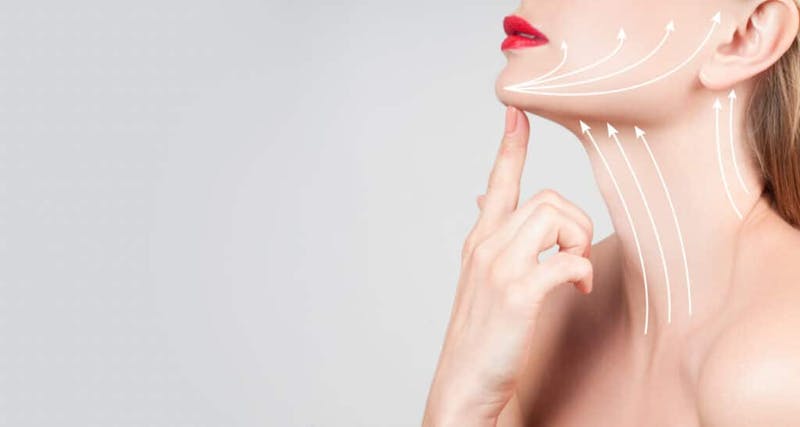
The word facelift is one of the most confusing terms in all of cosmetic surgery: it describes the reversal of what brings almost everyone into the office: the sagging, flaccid changes that happen as time and elements work on flesh, muscle and bone—making that person we see in the mirror look like a stranger.
What’s most interesting about facelifts is that nobody wants one. We look for facelift replacements, shortcuts or other ways to avoid the procedure. These include facelifts in a bottle, laser facelifts, liquid facelifts and more.
What works? What should you avoid? Let’s take a look into the different types of facelifts you can explore.
Facelifts at W Cosmetic Surgery®
What is a facelift?
As it was originally envisioned in the early 20th century, a facelift was an operation involving the removal of a bit of skin in front of the ear. It evolved to include treatment of other aging areas—the forehead, brows, neck, and eyes.
Today, many think that a facelift is a large procedure with long, visible incisions and a prolonged healing period. A common belief is that the results will make you look like someone else, someone that “had something done”.
Four ways you can avoid facelift surgery:
1. Live healthy
It’s the advice of your doctor, life coach, trainer and your own common sense. And you know what? They’re onto something. A healthy lifestyle will do a lot to help you retain a youthful appearance. That means eating well from a variety of healthy choices, drinking a lot (mostly water), exercising regularly, and getting plenty of sleep.
2. Protect your skin from the sun
Avoid the sun or wear lots of sunscreen. The former is better than the latter. Avoiding a sunburn does not necessarily mean that your elastin and collagen are safe from the sun’s rays.
3. Consider aggressive skin care
Facelifts in a bottle or jar—Retin A, alpha hydroxy acids, pentapeptides, and other products usually available in a physician’s office or by prescription—have been documented in scientific studies to improve the quality of the skin. Daily moisturizing will also help. Almost anything you buy over the counter can work, and the products you buy at a department store or through multi-level marketing organizations are not necessarily any better—or even as good. They may be a lot more expensive.
For example, in our practice, a two-month supply of Quattro-Luma (Retin A, hydroquinone, hydrocortisone and kojic acid) costs much less than well-known brand names such as La Mer or Rodan and Fields, and they have been documented to work in multiple studies. Drugstore products with hyaluronic acid, retinol, and alpha hydroxy acid may not have the strength formulated in a pharmacy or in a physician’s office, but they are often better than the stuff that comes in the expensive jars.
4. Consider other treatments
Dermabrasion, microneedling, intense pulsed light, radiofrequency treatments, fillers and Botox are all great treatments that help postpone or put off a facelift.
How do you know when it’s time to consider a facelift?
There are times when a facelift surgery is your best option. How will you know?
- When the techniques mentioned above don’t work.When you’ve tried everything, it’s time to try something else.
- When you catch a reflection of your father or mother in a store window and it’s you.
- When you start noticing your jowls and neck in a selfie. Or if you see a photo someone else takes of you from the side, and you can’t believe that the photo wasn’t retouched to make you look worse.
- If you’ve gone on a massive and successful campaign to lose weight and you notice that in place of your neck you have jiggly skin excesses and/or a turkey neck.
What kind of facelift is right for you?
When you’ve decided to look into a facelift, you’ll find that there are many different types of facelifts out there. This brief overview will help you start the process of evaluating, but it’s by no means a comprehensive list. We’d be happy to discuss the best treatments for you. Just request a consultation.
For simplicity sake, let’s divide these into in-office procedures and surgical procedures, which are usually done in an operating room as an outpatient. First, let’s review the In-Office NonSurgical Facelift Alternatives.
11 Types of Facelifts to Consider:
1. Liquid Facelift
A “liquid facelift” is a procedure done to fill up the face. There are other terms that have been coined by individual surgeons such as Y-Lift and Spacelift. All of these procedures achieve their rejuvenative benefit by pumping a variety of materials into the face in strategic locations. Most fillers that are put in the face are temporary, but they do produce a plumping effect. There is absolutely no lifting that occurs in the vertical axis with these procedures.
However, there is no doubt that volume loss occurs with aging, and these procedures, which are all office-based, expand your face and can make you look more youthful almost immediately. Non surgical facelifts can effectively postpone the need for a true facelift, especially if you are younger and skin laxity has not become severe.
Your face gets filled with any one of a variety of fillers that are available on the market. It’s an in office procedure with benefits. Unfortunately, many doctors and patients carry it to an extreme and you see a lot of people who look like they were blown up like balloons. The paradox that occurs with overfilling is that fillers make the face sink, sometimes worsening the gravitational changes that can occur with aging.
2. Thread Lift
Silhouette Lift™, feather lift, Mint threads and NovaThread Lift™, among others, are terms you might hear. These lifts use small, barbed or knotted sutures placed under the skin to elevate it. Many of these sutures are placed per side. They have minimal downtime, and the procedure is done in the office.
Unfortunately, the results of this procedure do not last for long, so you should know this before going through with a thread lift. Look at the results of the doctor you are considering, and make sure that you are happy with the way patients look after a year and not just a week after surgery (when they usually look great).
3. Liposculpture & Liposuction
As discussed above, volume loss occurs with aging. One of the elements that we lose over time is fat, which redistributes (and also sags) in the face.
With time, fat accumulates in the neck and along the jawline (jowls). The puffs around the eyes become more apparent because of volume loss in the cheek.
Liposculpture, also termed LipoStructure® by Dr. Sydney Coleman, uses the isolate from liposuction—your own fat—to be inserted artistically into the face. This fat is harvested from the abdomen, knees, or thighs, usually under local anesthesia. It’s treated, washed, sedimented, centrifuged and liquified. Tiny grafts of fat are then strategically placed in the face to increase fullness in locations from which it has been lost. Harvested fat can also be specially diluted, treated and injected into wrinkles. This procedure is called nanofat injection.
Fat has the advantage of being autologous and is a living graft. Some of the fat does not survive, but much of it does, and can be influenced by changes in weight over a lifetime. We use it selectively with some of the procedures listed below to add sculptural benefit. The goal is to add fat where it is needed and to remove it from where it has accumulated unnecessarily with agingf and to restore elements of the face closer
4. Energy Based Facelifts
Devices can be slipped under the skin, and combined with a bit of strategic liposuction, can be used to tighten the skin. Rarely does this substitute for a facelift in someone that has significant drooping, but you do get tightening. So, if you only need a little lift, these devices might be right for you. They can be done in the office. Devices that are used for this included Thermi, Face-Tite and Renuvion. We have experience with Thermi and Renuvion and offer these procedures to appropriate patients.
5. MyEllevate Procedure
The MyEllevate procedure addresses loose neck muscles. It is combined with energy and liposuction (see above) and sometimes even with a limited skin incision. Done in an office or operative setting, needle sized holes in the skin are used to thread a suture in to weaken a portion of the turkey neck muscle (the platysma) and then the muscle and the tissues that underly the muscle are suspended with the suture making a few more needle holes. This procedure makes a big difference in the appropriately chosen patient.
6. Brow Lift
The brow lift only elevates and reshapes the eyebrows. It’s amazing how important brow position is to your look. It either opens your eye or when it’s droopy, makes you look like you need an eye lift.
It also determines how people react to you. Because your brow muscles are read by others as communicating your state of mind. Consider these stick images:

Circle on the left conveys anger or is diabolical, circle in the middle=sad/confused, circle right=tired/out of it.
Those are just circles. A brow lift can open up your expression. As we age, the brow loses volume and descends and can also just be elevated. You need to be careful and assess the work of your surgeon before undergoing this procedure, because brow lifts done without planning can make you look “startled” or affect your expression so you subliminally convey the emotions that you easily recognize in the circles in the picture above.
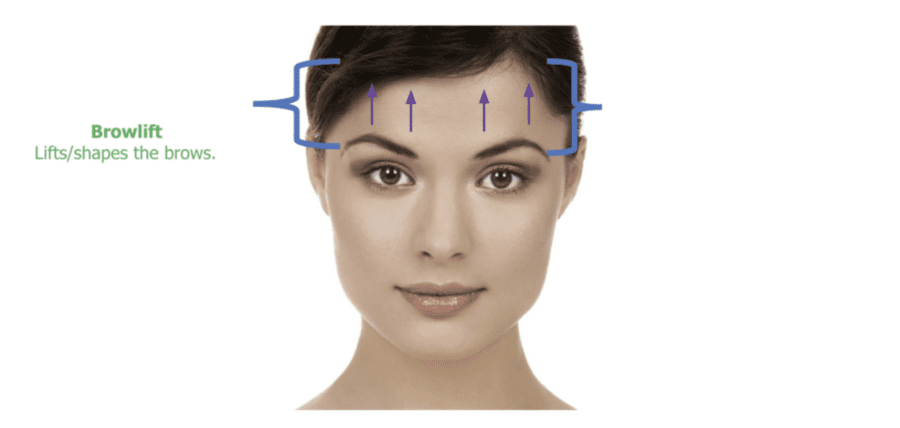
7. Mid Face Lift
If you don’t like your eyes, it may be because your cheeks have gone south. If, when you pull them up, you like the appearance of your eyes, your cheeks, and your jowls, this procedure may be ideal for you. This procedure makes the face regain the heart shape it had in youth and restores the eyes. In our practice, it is done with small incisions hidden in the temples and above the hairline. The mid face lift surgery can be performed under sedation alone.
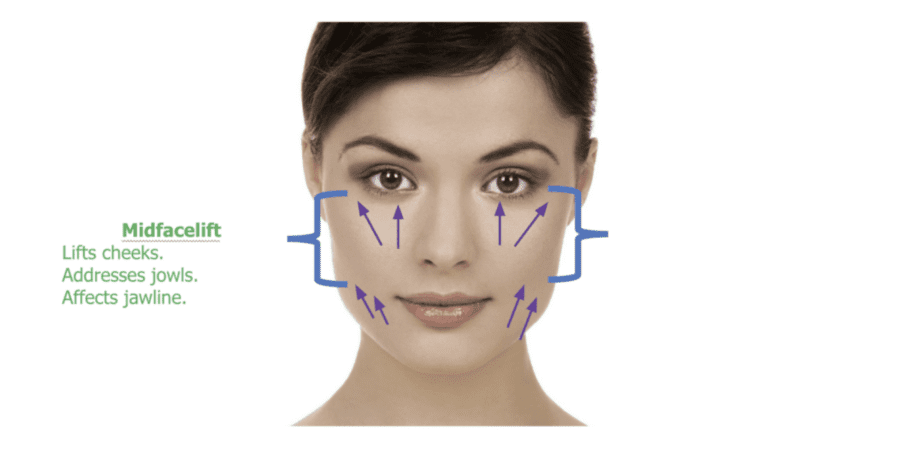
8. WNatural Micromidfacelift™
Many surgeons have a favorite (and trademarked) procedure that involves one or more of the techniques described above. Examples you may have heard of are the PonyTail Lift™, or the MACS lift, or the Quicklift®.
At W Cosmetic Surgery®, we offer the WNatural Micromidfacelift™, a minimally invasive midface lift procedure that addresses common signs of aging by elevating volumes in the cheeks back into a more youthful position. This procedure provides a natural-looking result with minimal scarring and downtime and improves the jawline as a secondary benefit.
A lot can be achieved with these procedures, which are usually idiosyncratic variance of the lifts described above. You should look at the results.
9. Neck Lift
This procedure, also called a platysmaplasty, or submentoplasty, addresses only a loose, drooping neck. It does not lift the face, but markedly diminishes the jowls and sagging in the neck. It can be done under local anesthesia with a bit of sedation or general anesthesia, and and it can be performed as an outpatient procedure, depending on the surgeon. At W Cosmetic Surgery®, we prefer to do neck lifts with sedation only, based primarily on patient preference.
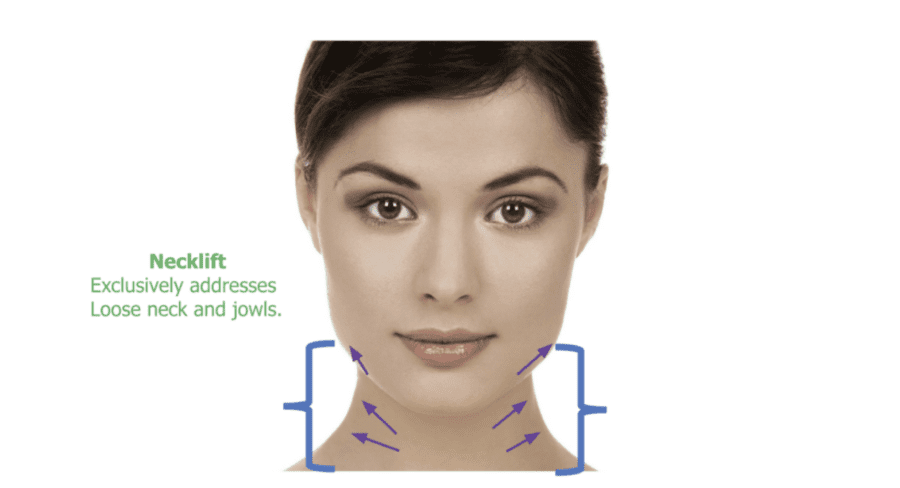
10. The Original Facelift
A facelift involves an incision in front of and behind the ear. Some surgeons do the surgery only in the front to limit the size of the incision. This is called a short scar facelift. All the incisions generally hide well, so there is little reason to fear an incision behind the ear, especially when the skin has sagged to a point that a patient might benefit. Pull up on your face. if that doesn’t produce all the antiaging benefits you are looking for, you may well benefit from an incision behind the ear.
The facelift has been well described by Millard, Rees, Skoog, Hamra, and many, many others.
The purpose of the procedure is to put things back in as natural a place as possible. Based on the surgeon and his or her surgical technique, that can be a realistic aim. The results that you see are generally not about the procedure name, but about the artistic abilities of the surgeon.
Once the skin is incised, loose skin is removed and the wound is sewn shut inconspicuously.
Under the skin and before it’s repaired, the actions occur that determine the type of benefit you get and the duration of benefit you get.
A survey of plastic surgeons indicated that the majority do little else than remove skin, but more and more surgeons are tightening the underlying muscles and the support system of the muscles—the so called SMAS—to obtain a longer duration of benefit and to pull the muscle independtly of the direction of drooping.
Here are some terms you may hear and explanations of their meaning.
- An ESP lift –stands for extended supraplatysmal lift–only lifts the skin and all the fat underneath the skin without addressing the underlying muscular component—the SMAS. It produces a natural result and was popularized by Frank Trepsat and Steven Hoefflin.
- A lateral SMASectomy, popularized by Daniel Baker in Manhattan, cuts a small strip of the SMAS away along the natural axis of aging and tightens the SMAS parallel to the nasolabial fold.
- The deep plane lift is now in vogue. This procedure frees up all the ligaments of the face and allows the fibrous portions of the face—along with the muscles that are contained with them—to be lifted perpendicular to the axis of aging. This procedure is enjoying widespreads use and is our procedure of choice for patients that require lifting of the jawlne and cheek.
The details of all these different approaches vary based on the surgeon and their preferences at the time you are underoing surgery, because most surgeons’ technique evolves based on their experience over a lifetime. What varis is where the incisions are placed, whether the midface or sideburns are changed and in what they is done with the deeper tissues. Sometimes the deep tissues—muscles, fat and glands__ are sculpted to enhance the result. Some surgeons don’t do that—they put in repositioning sutures or just leave things alone.
Most surgeons have a favorite technique, and they won’t hesitate to tell you why their procedure is better (that includes me).
11. Full Facelifts
This procedure, as it was originally described, involved an incision in the hair of the temple that tapers down along the front and back of the ear and into the posterior hairline, with an incision in the neck. It’s still performed by many surgeons.
The procedure is done under general anesthesia and often involves a stay in the hospital, and can be accompanied by eyelid rejuvenation (blepharoplasty). .
This procedure pulls you in multiple directions through a large incision and can result in a pulled look if all the vectors of lift are not respected. The sideburn can be overlifted and result in an unnatural appearance and the hairline can get pulled back or harbor a large scalping scar.
In our opinion, it is better to lift various areas separately (though they can all be done at one time) to avoid any tell tale signs of cosmetic surgery that are sometimes seen with the full face approach.
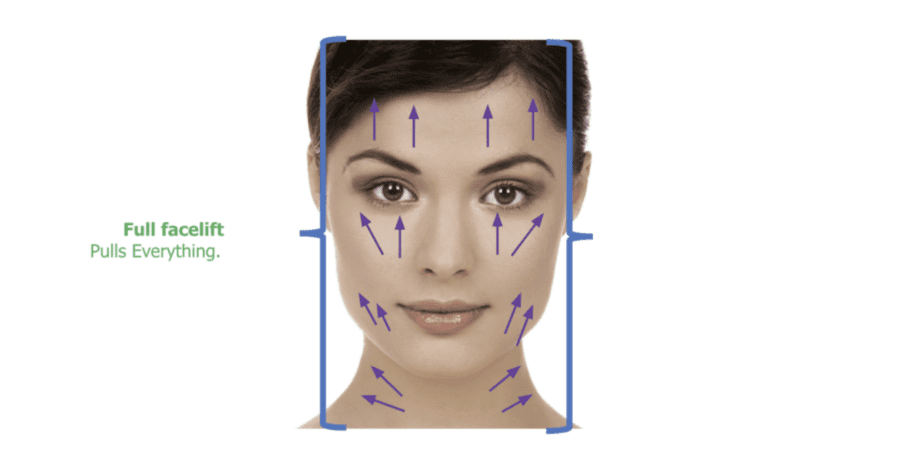
We can recommend a number of treatments based on the changes you’d like to see. You can see the before and after facelift photos of some of our real patients to get look at the amazing results we’ve gotten for previous patients. A consultation in our office may help you better understand which of these facelift types, techniques, and alternatives is right for you.
The word, facelift, is one of the most confusing terms in all of cosmetic surgery, but it describes the reversal of what brings almost everyone into the office: the sagging, flaccid changes that happen as time and elements work on flesh, muscle and bone—making that person we see in the mirror look like a stranger.

